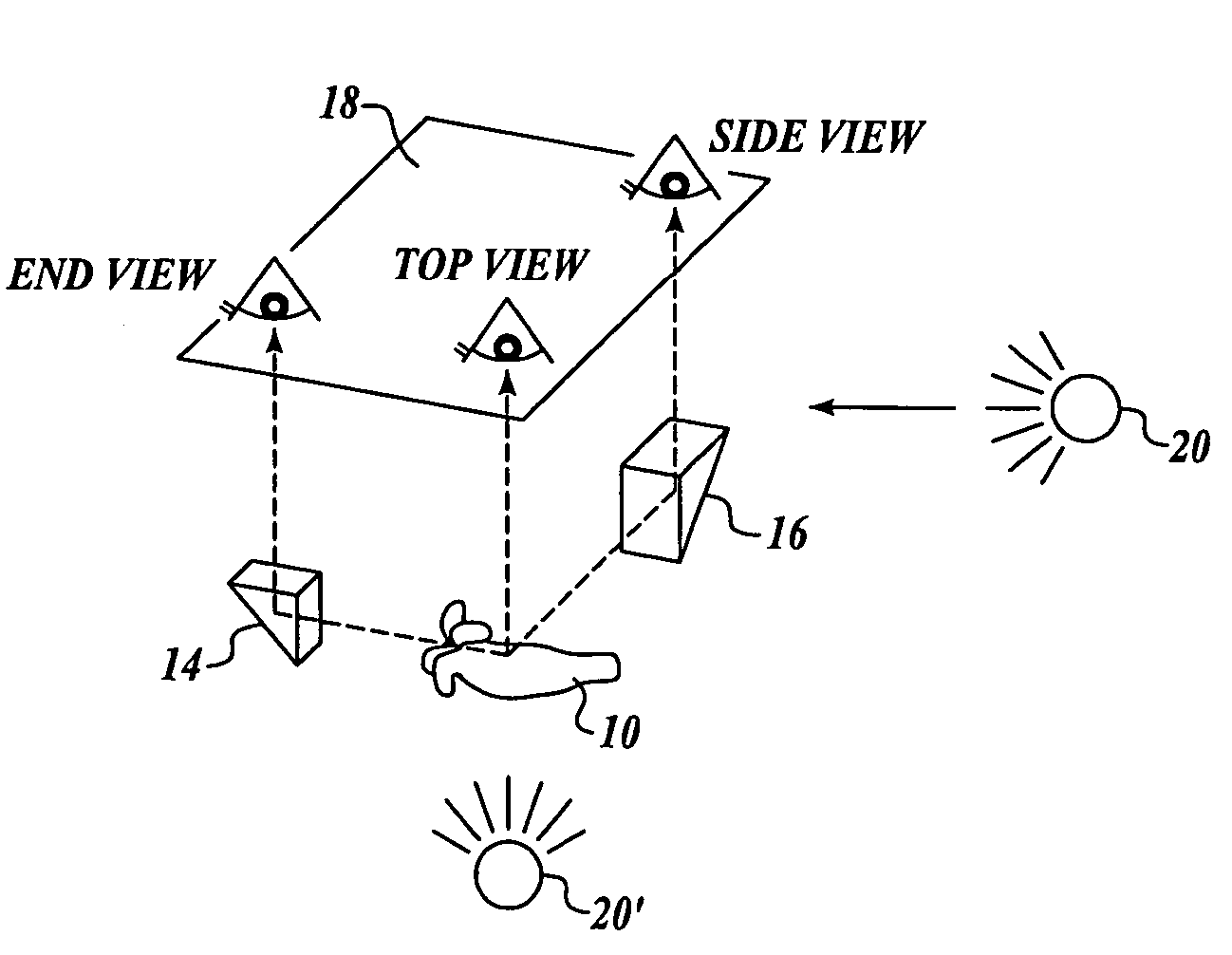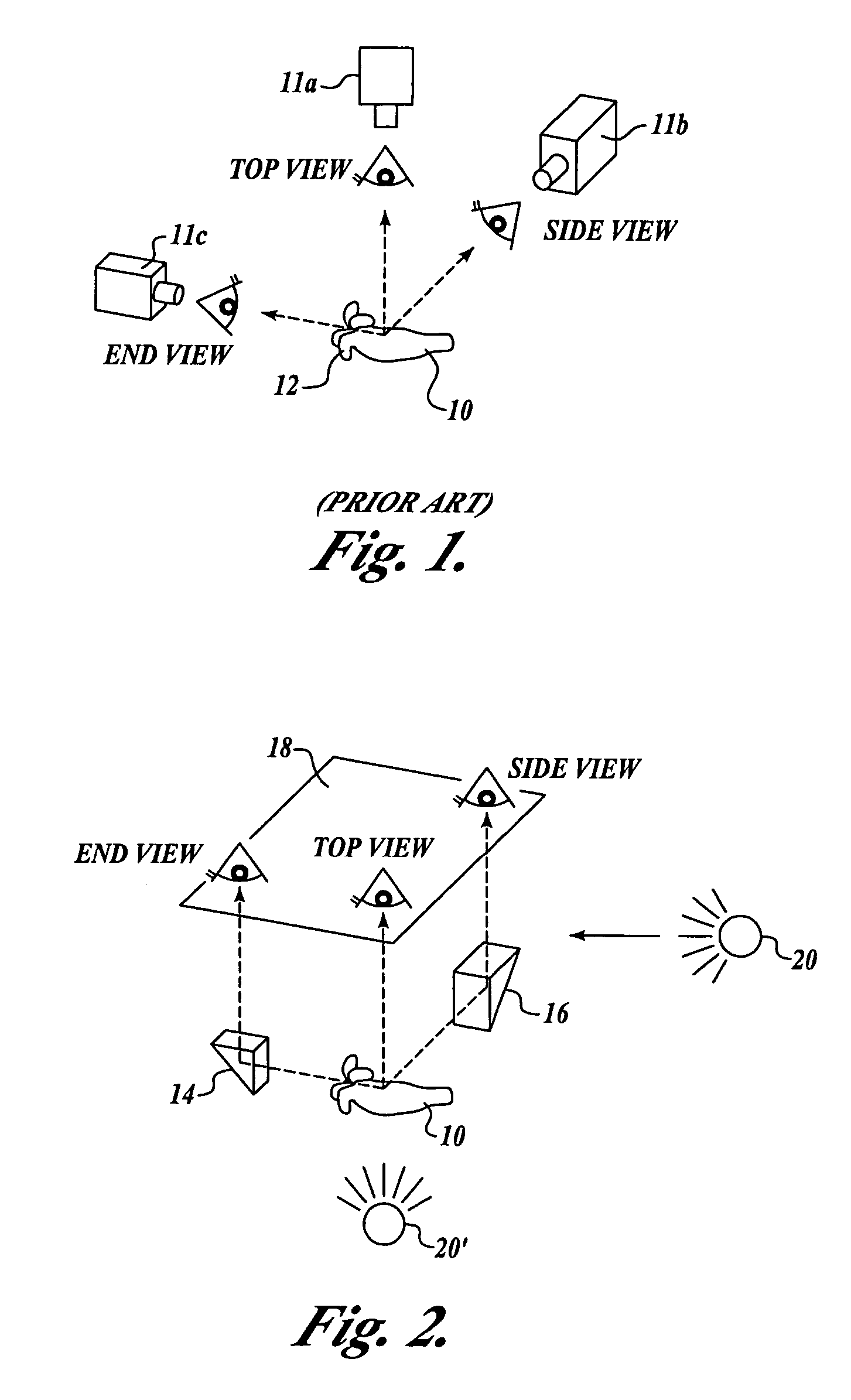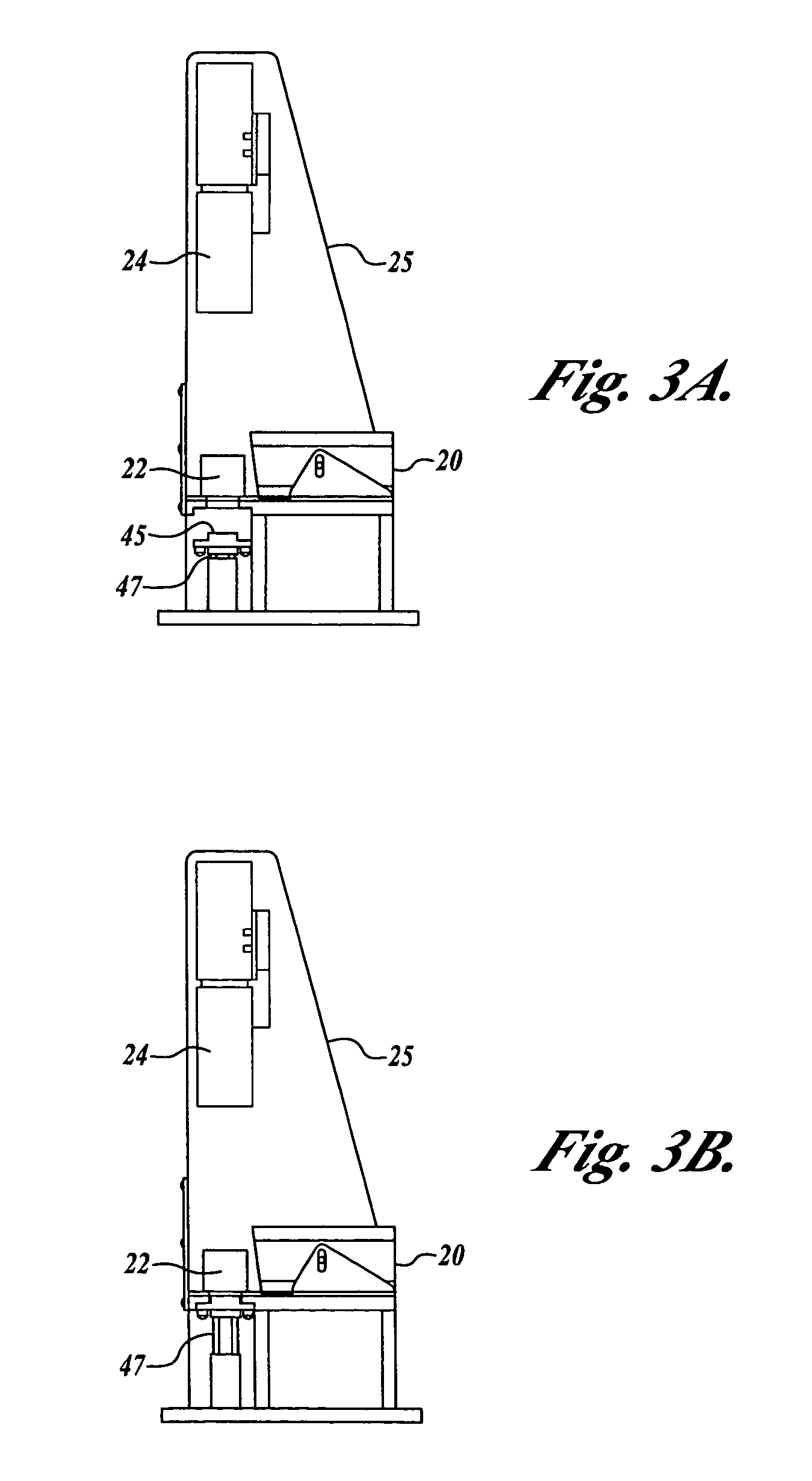Method and system for simultaneously imaging multiple views of a plant embryo
a plant embryo and simultaneous imaging technology, applied in the field of simultaneous imaging of plant embryos, can solve the problems of time-consuming and expensive manual labor, high cost, and large amount of handling, and achieve the effect of shortening time and operation
- Summary
- Abstract
- Description
- Claims
- Application Information
AI Technical Summary
Benefits of technology
Problems solved by technology
Method used
Image
Examples
Embodiment Construction
[0025]FIG. 2 schematically illustrates the method of the present invention for simultaneously imaging multiple views of a plant embryo. The method involves directly imaging a first view of a plant embryo 10 (the top view in FIG. 2) on an image plane 18 of a camera; and using a first reflecting surface 14 to receive and reflect a second view of the embryo (the cotyledon end view in FIG. 2) toward the image plane 18 of the same camera. Thus, an image combining both the first and second views (i.e., the top and end views in the illustrated embodiment) can be taken. In one embodiment, the method further involves using a second reflecting surface 16 to receive and reflect a third view of the embryo (the side view in FIG. 2) toward the image plane 18 of the same camera. According to this arrangement, a camera with the image plane 18 can simultaneously acquire the first view (e.g., the top view) directly from the embryo 10, the second view (e.g., the cotyledon end view) via the first refle...
PUM
| Property | Measurement | Unit |
|---|---|---|
| length | aaaaa | aaaaa |
| surface area | aaaaa | aaaaa |
| surface texture | aaaaa | aaaaa |
Abstract
Description
Claims
Application Information
 Login to View More
Login to View More - R&D
- Intellectual Property
- Life Sciences
- Materials
- Tech Scout
- Unparalleled Data Quality
- Higher Quality Content
- 60% Fewer Hallucinations
Browse by: Latest US Patents, China's latest patents, Technical Efficacy Thesaurus, Application Domain, Technology Topic, Popular Technical Reports.
© 2025 PatSnap. All rights reserved.Legal|Privacy policy|Modern Slavery Act Transparency Statement|Sitemap|About US| Contact US: help@patsnap.com



